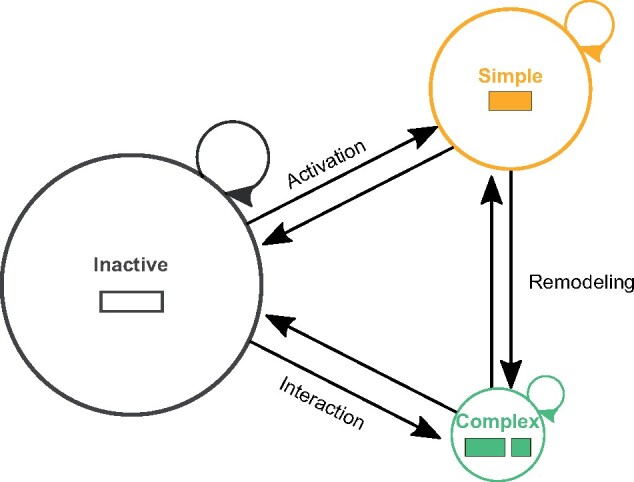Fig. 6.

Model of enhancer evolutionary architecture change and activity. Sequences with the potential to be enhancers (rectangles) can occupy active or inactive states and have either simple or complex evolutionary architectures. Sequences transition between these states as a result of large- and small-scale genomic variants. Inactive sequences can become simple enhancers through small-scale genomic changes, such as substitutions that increase activity or nearby chromatin changes that increase accessibility. Complex enhancers sequences of different evolutionary origins are brought together by genomic rearrangements. In some cases, the integration of these sequences and subsequent substitutions produce activity. In others, already active simple enhancers are remodeled into active complex enhancers with presumably different activity patterns. Sequences regularly transition between these states over evolutionary time.
